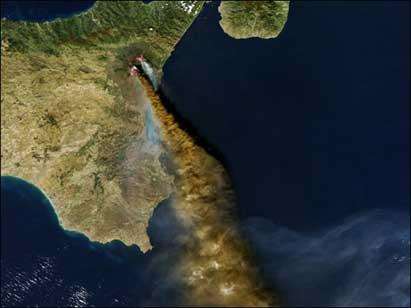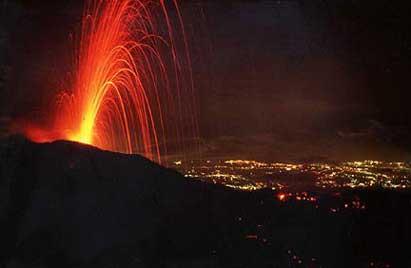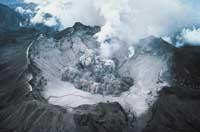Etna, explosive mixture
2001/09/23 Mendiburu, Joana - Elhuyar Zientziaren Komunikazioa
Etna volcano is increasingly dangerous, we will not rely on the show that offered last summer, P. In the article published by geologist Schiano in the journal Nature. In fact, furnace studies of the last 500,000 years are more reliable than a summer show. However, both shows and geological studies show that the volcano is increasingly explosive.
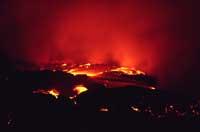
We know that in geology and in the day to day of human beings we do not speak of the same term, but, what do we do not link the basis of the article of Pierre Schiano with the eruptions that have occurred this same summer? In addition, Pierre Schiano, professor at the Blaise-Pascal University of Clermont Ferrand, after researching the furnaces of the last 500,000 years, said that the volcano will have an increasingly explosive trend. Therefore, it is logical to think that this summer is only a warning of what will happen in the coming years.
Mystery based on two types of eruptions

They are defined according to the material projected by volcanoes. Those that emit gases are called explosives, those that throw liquid are effusive or Hawaiian, the extrusive ones when solid predominates and the mixed ones when gas, liquid and solid appear in similar proportions. Some are due to the movement of the tectonic plates and others start in the eruption by climbing a cloud of materials from the mantle.
The case of Etna has always been attractive to geologists. And the material released by Etna came out of the mantle and has been defined as Hawaiian volcanoes, but the actions investigated in recent years did not conform to this decision. Etna has also shown features of more explosive volcanoes than Hawaiians.
Geologists have launched many theories to explain both contradictory but unsuccessful results. Nobody thought that the material released could come from the plate of northern Sicily, and precisely there was the key. In the north of Sicily, in the Aeolian archipelago, are the volcanoes Stromboli and Vulcano, created by the subduction between European and African plates, but in Sicily itself it has been considered that these plates had no influence.
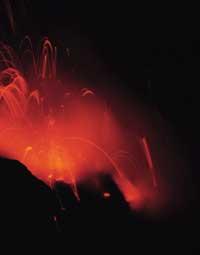
P. Schiano and his team, the microscope in their hands, began to investigate. The history of Etna has been made possible by the small traces of neobiome, titanium and zirconium. The two oldest furnaces studied have seen that the origin is the mantle, so, as has been said so far, at least at that time it is clear that Etna was a Hawaiian volcano. In contrast, plate material has been detected in the two younger types of furnaces. Only a small part of the 7,000 year old lava was plaque and half of the 1999 sample. It is true that no seismic activity has occurred in Sicily because of these plaques, but it seems that P.Schiano was suspicious.
The results of the study indicate that Etna activity has been changing. The volcano was born 500,000 years ago and has been faithful to its origin until it is affected by a continuous migration of plates further north.
Increasingly dangerous explosions

The Etna has shown a transition never exposed by other volcanoes, which goes from being a Hawaiian volcano to an extruded volcano.
The problem is that the eruptions of Hawaiian volcanoes offer spectacular shows, but without great risks. On the contrary, the eruption caused by two tectonic plates when colliding and submerging one under another produces an increase in the emission of solids and an increase in risk. Thus, geologists claim that the millennial migration of European and African plates, Etna, increasingly explosive, will continue along the same path.

The results of cutting-edge research are a great scientific discovery, as the transition between two processes of a volcano has never been demonstrated.
However, the Sicilians can be calm, even those who have not been able to see the shows of the Etna. We must not forget that the time scale of geology is not the same as ours.
Published in 7K

Gai honi buruzko eduki gehiago
Elhuyarrek garatutako teknologia




